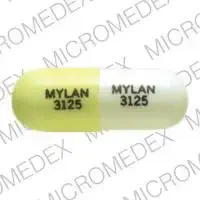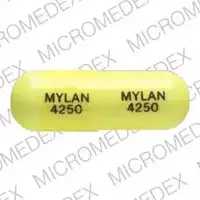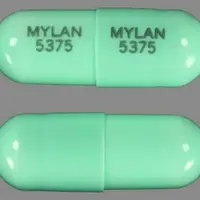Generic name: sinequan
Availability: Prescription only
Pregnancy & Lactation: Risk data available
Brand names: Silenor, Doxepin (capsules, oral concentrate)
What is Doxepin (systemic) (monograph)?
Warning
- Suicidality
-
Antidepressants may increase risk of suicidal thinking and behavior (suicidality) in children, adolescents, and young adults (18–24 years of age) with major depressive disorder and other psychiatric disorders; balance this risk with clinical need. Doxepin is not approved for use in pediatric patients <12 years of age. (See Pediatric Use under Cautions.)
-
In pooled data analyses, risk of suicidality was not increased in adults >24 years of age and apparently was reduced in adults ≥65 years of age with antidepressant therapy compared with placebo.
-
Depression and certain other psychiatric disorders are themselves associated with an increased risk of suicide.
-
Appropriately monitor and closely observe all patients who are started on doxepin therapy for clinical worsening, suicidality, or unusual changes in behavior; involve family members and/or caregivers in this process. (See Worsening of Depression and Suicidality Risk and Pediatric Use under Cautions.)
Introduction
Dibenzoxepin-derivative tricyclic antidepressant (TCA).
Uses for Doxepin (Systemic)
Depressive and Anxiety Disorders
Treatment of depression and/or anxiety in psychoneurotic patients. Psychoneurosis symptoms that respond well to doxepin include anxiety, tension, depression, somatic symptoms and concerns, sleep disturbances, guilt, lack of energy, fear, apprehension, and worry.
Treatment of depression and/or anxiety associated with alcoholism. (See Specific Drugs under Interactions.)
Treatment of depression and/or anxiety associated with organic disease; consider possible drug interactions if receiving other drugs concomitantly.
Treatment of psychotic depressive disorders with associated anxiety, including involutional depression and manic-depressive disorders.
Chronic Idiopathic Urticaria
Has been effective in the management of chronic idiopathic urticaria† and may be used as an alternative to antihistamines, which are generally considered first-line therapy in patients with this condition.
Doxepin (Systemic) Dosage and Administration
General
Depressive and Anxiety Disorders
-
Allow at least 2 weeks to elapse between discontinuance of therapy with an MAO inhibitor and initiation of doxepin and vice versa. Also allow at least 5 weeks to elapse when switching from fluoxetine.
-
Monitor for possible worsening of depression, suicidality, or unusual changes in behavior, especially at the beginning of therapy or during periods of dosage adjustments. (See Worsening of Depression and Suicidality Risk under Cautions.)
-
Avoid abrupt discontinuance of therapy in patients receiving high dosages for prolonged periods. To avoid withdrawal reactions, taper dosage gradually. (See Withdrawal of Therapy under Cautions.)
Administration
Oral Administration
Administer orally in up to 3 divided doses or as a single daily dose (if ≤150 mg); may administer once-daily doses at bedtime to reduce daytime sedation.
Dilute each dose of oral concentrate with 120 mL of water, whole or skim milk, or orange, grapefruit, tomato, prune, or pineapple juice just prior to administration; solution is physically incompatible with many carbonated beverages. Patients on methadone maintenance may mix doxepin oral concentrate and methadone syrup with Gatorade, lemonade, orange juice, sugar water, Tang, or water but not with grape juice. Bulk dilution and storage not recommended by manufacturer.
Dosage
Available as doxepin hydrochloride; dosage expressed in terms of doxepin.
Individualize dosage carefully according to individual requirements and response.
When administered as a single daily dose, the maximum daily dose recommended is 150 mg. Commercially available 150-mg capsules of doxepin are intended for maintenance therapy only and are not recommended for initial therapy.
Pediatric Patients
Depressive and Anxiety Disorders
Oral
Adolescents ≥12 years of age should receive dosage recommended for adults. (See Adults under Dosage.)
Adults
Depressive and Anxiety Disorders
Oral
Patients with illness of mild to moderate severity: Initially, 75 mg daily. May adjust dosage as necessary based on response. Usual maintenance dosage: 75–150 mg daily.
More seriously ill patients: Higher dosages may be necessary; gradually increase dosage to ≤300 mg daily, if necessary.
Dosages >300 mg daily rarely provide additional therapeutic effect.
Patients with very mild symptomatology or emotional symptoms associated with organic brain syndrome: Lower dosages may be adequate; some patients respond to 25–50 mg daily.
Prescribing Limits
Pediatric Patients
Depressive and Anxiety Disorders
Oral
Adolescents ≥12 years of age: Maximum 300 mg daily.
Adults
Oral
Maximum 300 mg daily.
Special Populations
Geriatric Patients
Select dosage at the lower end of recommended range since decreased hepatic, renal, or cardiac function and concomitant illness and medications are more frequent; increase dosage more gradually and monitor closely. May administer before bedtime. (See Geriatric Use under Cautions.)
Warnings
Contraindications
-
Although the manufacturers do not state that doxepin is contraindicated in patients receiving MAO inhibitors, concurrent or recent (i.e., within 2 weeks) therapy with MAO inhibitors generally is contraindicated in patients receiving TCAs. (See MAO Inhibitors under Interactions.)
-
Glaucoma or urinary retention.
-
Known hypersensitivity to doxepin or other dibenzoxepin-derivative TCAs.
Warnings/Precautions
Warnings
Shares the toxic potentials of other TCAs; observe the usual precautions of TCA therapy.
Worsening of Depression and Suicidality Risk
Possible worsening of depression and/or emergence of suicidal ideation and behavior (suicidality) or unusual changes in behavior in both adult and pediatric patients with major depressive disorder, whether or not they are taking antidepressants; may persist until clinically important remission occurs. However, suicide is a known risk of depression and certain other psychiatric disorders, and these disorders themselves are the strongest predictors of suicide.
Appropriately monitor and closely observe patients receiving doxepin for any reason, particularly during initiation of therapy (i.e., the first few months) and during periods of dosage adjustments. (See Boxed Warning and also see Pediatric Use under Cautions.)
Anxiety, agitation, panic attacks, insomnia, irritability, hostility, aggressiveness, impulsivity, akathisia, hypomania, and/or mania may be precursors to emerging suicidality. Consider changing or discontinuing therapy in patients whose depression is persistently worse or in those with emerging suicidality or symptoms that might be precursors to worsening depression or suicidality, particularly if severe, abrupt in onset, or not part of patient’s presenting symptoms. (See General under Dosage and Administration.)
Prescribe in smallest quantity consistent with good patient management to reduce risk of overdosage.
Observe these precautions for patients with psychiatric (e.g., major depressive disorder, obsessive-compulsive disorder [OCD]) or nonpsychiatric disorders.
Bipolar Disorder
May unmask bipolar disorder. (See Activation of Mania or Hypomania under Cautions.) Doxepin is not approved for use in treating bipolar depression.
Screen for risk of bipolar disorder by obtaining detailed psychiatric history (e.g., family history of suicide, bipolar disorder, depression) prior to initiating therapy.
Sensitivity Reactions
Possible sensitivity reactions including skin rash, photosensitization, edema, and pruritus.
General Precautions
Activation of Mania or Hypomania
Possible activation of mania and hypomania, particularly in patients with bipolar disorder; decrease dosage and/or administer an antipsychotic agent concomitantly. (See Bipolar Disorder under Cautions.)
Cognitive/Physical Impairment
Mental alertness or physical coordination required for performing hazardous tasks (e.g., driving, operating machinery) may be impaired.
Response to alcohol may be potentiated.
Anticholinergic Effects
Use with caution in patients for whom excess anticholinergic activity could be harmful (e.g., history of urinary retention, increased IOP). (See Contraindications under Cautions.)
Withdrawal of Therapy
Possibly severe withdrawal reactions; avoid abrupt discontinuance of therapy and taper dosage gradually.
Psychosis
Possible exacerbation of psychosis in patients with schizophrenia; decrease dosage or administer an antipsychotic agent concomitantly.
Specific Populations
Pregnancy
Category C.
Lactation
Distributes into milk; some clinicians recommend that breast-feeding be avoided during doxepin therapy.
Pediatric Use
Safety of doxepin in pediatric patients <12 years of age has not been established.
FDA warns that a greater risk of suicidal thinking or behavior (suicidality) occurred during first few months of antidepressant treatment (4%) compared with placebo (2%) in children and adolescents with major depressive disorder, OCD, or other psychiatric disorders based on pooled analyses of 24 short-term, placebo-controlled trials of 9 antidepressant drugs (SSRIs and others). However, a more recent meta-analysis of 27 placebo-controlled trials of 9 antidepressants (SSRIs and others) in patients <19 years of age with major depressive disorder, OCD, or non-OCD anxiety disorders suggests that the benefits of antidepressant therapy in treating these conditions may outweigh the risks of suicidal behavior or suicidal ideation. No suicides occurred in these pediatric trials.
Carefully consider these findings when assessing potential benefits and risks of doxepin in a child or adolescent for any clinical use. (See Worsening of Depression and Suicidality Risk under Cautions.)
Geriatric Use
Insufficient experience in patients ≥65 years of age to determine whether geriatric patients respond differently than younger adults.
In pooled data analyses, a reduced risk of suicidality was observed in adults ≥65 years of age with antidepressant therapy compared with placebo. (See Boxed Warning and also see Worsening of Depression and Suicidality Risk under Cautions.)
Doxepin generally is well tolerated in geriatric patients. Possible increased sensitivity to anticholinergic (e.g., dry mouth, constipation, vision disturbance), cardiovascular, orthostatic hypotension, and sedative effects of TCAs.
Titrate dosage carefully. (See Geriatric Patients under Dosage and Administration.)
Common Adverse Effects
Drowsiness, anticholinergic effects (e.g., dry mouth, constipation, blurred vision), GI effects (e.g., nausea, vomiting, diarrhea).
How should I use Doxepin (systemic) (monograph)
General
Depressive and Anxiety Disorders
-
Allow at least 2 weeks to elapse between discontinuance of therapy with an MAO inhibitor and initiation of doxepin and vice versa. Also allow at least 5 weeks to elapse when switching from fluoxetine.
-
Monitor for possible worsening of depression, suicidality, or unusual changes in behavior, especially at the beginning of therapy or during periods of dosage adjustments. (See Worsening of Depression and Suicidality Risk under Cautions.)
-
Avoid abrupt discontinuance of therapy in patients receiving high dosages for prolonged periods. To avoid withdrawal reactions, taper dosage gradually. (See Withdrawal of Therapy under Cautions.)
Administration
Oral Administration
Administer orally in up to 3 divided doses or as a single daily dose (if ≤150 mg); may administer once-daily doses at bedtime to reduce daytime sedation.
Dilute each dose of oral concentrate with 120 mL of water, whole or skim milk, or orange, grapefruit, tomato, prune, or pineapple juice just prior to administration; solution is physically incompatible with many carbonated beverages. Patients on methadone maintenance may mix doxepin oral concentrate and methadone syrup with Gatorade, lemonade, orange juice, sugar water, Tang, or water but not with grape juice. Bulk dilution and storage not recommended by manufacturer.
Dosage
Available as doxepin hydrochloride; dosage expressed in terms of doxepin.
Individualize dosage carefully according to individual requirements and response.
When administered as a single daily dose, the maximum daily dose recommended is 150 mg. Commercially available 150-mg capsules of doxepin are intended for maintenance therapy only and are not recommended for initial therapy.
Pediatric Patients
Depressive and Anxiety Disorders
Oral
Adolescents ≥12 years of age should receive dosage recommended for adults. (See Adults under Dosage.)
Adults
Depressive and Anxiety Disorders
Oral
Patients with illness of mild to moderate severity: Initially, 75 mg daily. May adjust dosage as necessary based on response. Usual maintenance dosage: 75–150 mg daily.
More seriously ill patients: Higher dosages may be necessary; gradually increase dosage to ≤300 mg daily, if necessary.
Dosages >300 mg daily rarely provide additional therapeutic effect.
Patients with very mild symptomatology or emotional symptoms associated with organic brain syndrome: Lower dosages may be adequate; some patients respond to 25–50 mg daily.
Prescribing Limits
Pediatric Patients
Depressive and Anxiety Disorders
Oral
Adolescents ≥12 years of age: Maximum 300 mg daily.
Adults
Oral
Maximum 300 mg daily.
Special Populations
Geriatric Patients
Select dosage at the lower end of recommended range since decreased hepatic, renal, or cardiac function and concomitant illness and medications are more frequent; increase dosage more gradually and monitor closely. May administer before bedtime. (See Geriatric Use under Cautions.)
What other drugs will affect Doxepin (systemic) (monograph)?
Metabolized in the liver by various CYP isoenzymes (e.g., CYP1A2, CYP2D6, CYP3A4).
Drugs Affecting Hepatic Microsomal Enzymes
Inhibitors of CYP2D6: potential pharmacokinetic interaction (increased plasma doxepin concentrations) with concomitant use of CYP2D6 inhibitors; use with caution. Consider doxepin dosage adjustment whenever a CYP2D6 inhibitor is added or discontinued.
Specific Drugs
|
Drug |
Interaction |
Comments |
|---|---|---|
|
Alcohol |
Potentiates the effects of alcohol |
Avoid concomitant use Increased risks if overdose or suicide attempt occurs |
|
Antiarrhythmics: class 1C (e.g., flecainide, propafenone); quinidine |
Potential for decreased doxepin metabolism |
Monitor for TCA toxicity; dosage adjustment may be needed |
|
Anticholinergic agents |
Hyperthermia, particularly during hot weather, and paralytic ileus possible |
Use with caution; dosage adjustment may be needed |
|
Antipsychotics (e.g., phenothiazines) |
Potential for decreased doxepin metabolism |
Dosage adjustment may be needed |
|
Cimetidine |
Possible increased plasma doxepin concentrations Potential for tricyclic toxicity, particularly anticholinergic adverse effects |
Monitor for TCA toxicity; dosage adjustment may be needed |
|
CNS depressants (e.g., analgesics, antihistamines, barbiturates, general anesthetics, opiates) |
Potentiates the effects of CNS depressants |
|
|
Guanethidine and related compounds |
Antagonizes the antihypertensive effects of guanethidine and related compounds at doxepin dosages >150 mg daily; at dosages ≤150 mg daily, antagonism of antihypertensive effects not reported |
|
|
Levodopa |
May interfere with levodopa absorption |
Monitor levodopa dosage carefully |
|
MAO inhibitors |
Potentially life-threatening serotonin syndrome |
Concomitant use with TCAs generally contraindicated Allow at least 2 weeks to elapse when switching to or from these drugs |
|
Methylphenidate |
Potential for decreased metabolism and increased therapeutic efficacy and toxicity of TCAs |
|
|
SSRIs (e.g., citalopram, escitalopram, fluoxetine, fluvoxamine, paroxetine, sertraline) |
Possible serotonin syndrome Potential for decreased doxepin metabolism and increased plasma concentrations |
Use with caution and monitor for TCA toxicity; dosage adjustment may be needed Allow at least 5 weeks to elapse when switching from fluoxetine |
|
Sympathomimetic agents (e.g., amphetamines, epinephrine, isoproterenol, norepinephrine, phenylephrine) |
Increased vasopressor and/or cardiac effects |
Use with caution; dosage adjustment may be required |
|
Thyroid agents |
Possible cardiac arrhythmias |
Use with caution |
|
Tolazamide |
Severe hypoglycemia reported in at least one patient |







